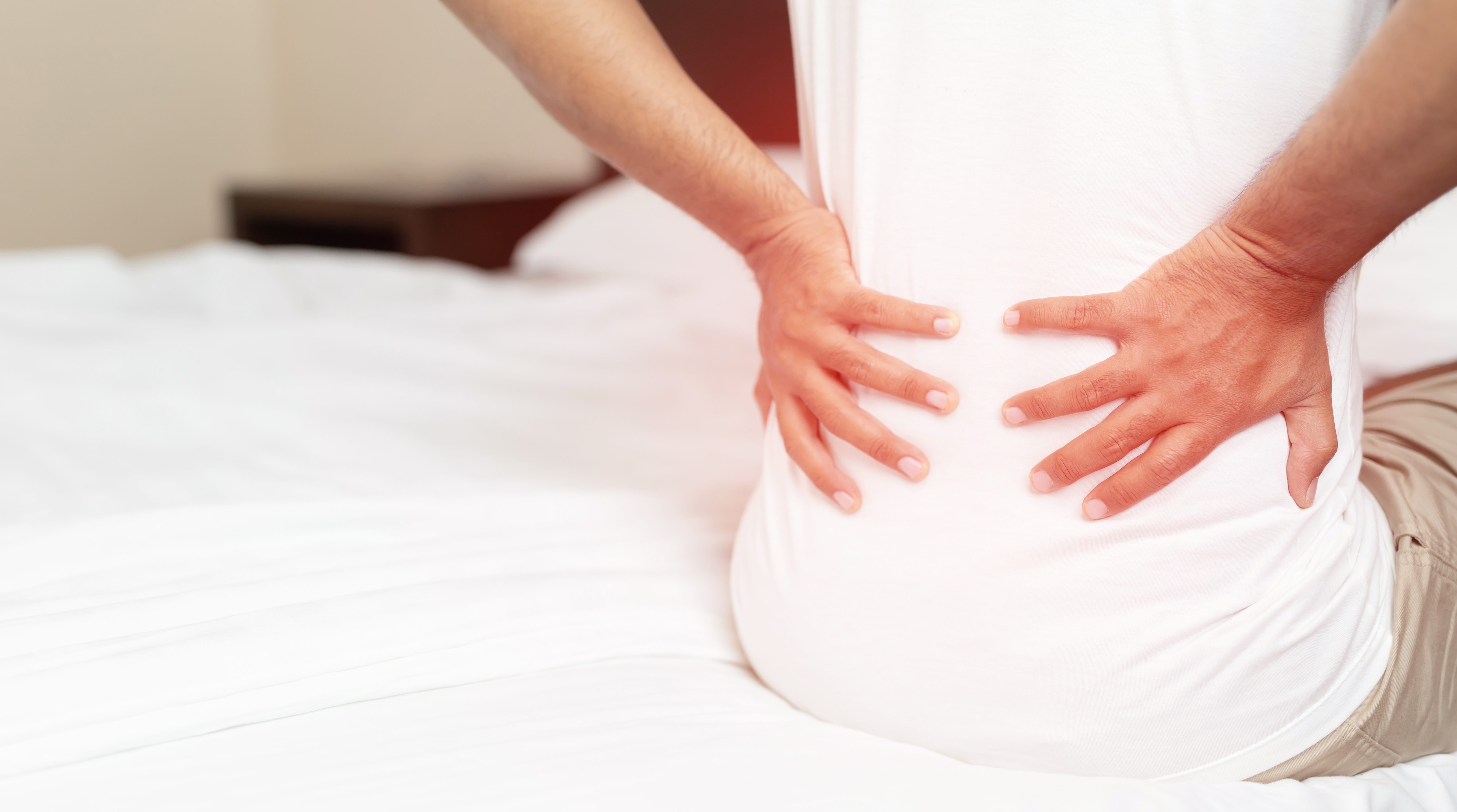Definitive Guide To The Best Sleeping Positions For Lower Back Pain
One of the leading causes of disability in the US is lower back pain. But this is not the most significant statistic about lower back pain. It is generally believed that one of the leading causes of widespread opioid addiction and unlawful distribution in the US is the widespread occurrence of lower back pain.
Interestingly, most lower back pains are not the cause of a serious disease, infection or injury. Instead, it is the result of bad posture and movement habits, fortunately there are multiple remedies and aids that can help, including pillows that alleviate lower back pain and sleeping positions that comfortable relieve lower back pain as well.
Lower back pain during daytime is already a cause for concern; more so, if it prevents you from getting enough sleep. Read through our tips below to find the best sleeping position for lower back pain. Take note however that not one of these tips is better than the other. It is more of a case of trying each and picking the one that gives you the best result.
Best Sleeping Positions for Comfortably Sleeping With Lower Back Pain
Sleeping on Your Back
If you are more comfortable sleeping on your back, put a pillow under your knees for support. To properly do this, lay flat on your back with a pillow to support your head and neck. Then place a small pillow under your knees to help maintain your spine in the neutral position. The neutral position of your spine is when it is maintaining its natural curve. This position also helps your back to maintain alignment with your other internal organs while you sleep.
Sleeping on Your Side
If you are a side sleeper, place a pillow between your legs. The purpose of this pillow is to maintain the natural alignment of your legs, hips, and back. If there is a space between your waist and the bed while you are on your side, place a pillow that is just big enough to provide support here as well. It is important that you switch sides from night to night to avoid having a muscular imbalance. Don’t sleep on one side only. The best way to get into the side position is to first lay on your back and then gently roll to your side.
Sleeping on Your Stomach
If you find sleeping on your stomach comfortable for your lower back pain, continue to do so but you need to do it correctly. Incorrectly sleeping on your stomach can cause neck pains. The proper way to sleep on your stomach is to place a pillow to support your hips and waist. The concept is similar to a back sleeper where the support under your knees will help maintain the natural curve of the spine.
Sleeping Habits to Help Ease Lower Back Pain
Using a Night Roll
The McKenzie night roll looks like a pillow tube with soft loose cloth on both ends so that they can be tied around the waist. This is best for people who move around in different positions a lot when they sleep because the night roll moves with you.
So whether you sleep on your side for the first hour then shift on your back and then again to your other side, the night roll will provide you the support you need to maintain the natural curve of your spine while you go through these different positions during your sleep.
Even if you do not move a lot when you sleep, you can use the night roll to replace the small pillow that you use to support your waist if you sleep on your side and there is a space between your waist and the bed.
The night roll is not a perfect strategy for keeping support on your lower back while you sleep, and it might not work for everyone. You can test if it will work for you before purchasing a night roll by rolling a bath towel and fastening it around your waist.
If this gives you comfortable sleep, then the night roll might be able to help you better. Additionally, if you suffer from neck pain when you wake up in the morning, you can use a similar test with a bath towel and place it on your neck instead of your waist. If this gives your neck comfort, then you can use the night roll to provide support for your neck to avoid neck pain while sleeping.
Sleeping on Different Surfaces
This may come as a shock to some but the mattress that you sleep on can make lower back pain worse if it is not the ideal type of mattress for your back. This might be an expensive experiment, but you will need to try different types of mattresses that use different kinds of foam to find out which one suits you the best.
One quick and easy way to find out if your current mattress might not be giving the back support that you need is to try sleeping in a different room. Try sleeping on your kid’s bed or in the guest room. If your back does not suffer as much on a different bed, then that means that it’s time for you to replace your mattress with one that provides the back support that you need. There are “Bed in a Box” brands that guarantee a great and restful sleep or they will take the mattress out of your house with a full refund.
Taking Your Time After Waking
Imagine a sponge placed over a basin of water. The sponge will absorb as much water as it can. Now when it is filled with water, compress the sponge with your fist. The water will then escape out of the sponge. The sponge is like your spinal discs. Gravity compresses it during the day and then it starts to refill itself with spinal fluid when you sleep at night. This process is called imbibition.
While the spine is pressurized with fluid, it is more sensitive to lower back pain which is why most people with back pain experience stiffness and pain on their back in the morning.
In the morning when you wake up, the spinal disc will start to lose the fluid that it has accumulated when you were asleep. During this time, your spine is more vulnerable to stress from overstretching and other activities that may have more than the normal impact on your back. After you wake up, give yourself an hour of completely normal movement before you slowly move towards your normal daily routine. This gives your back enough time to prepare itself for the day ahead.
Changing Daytime Habits
In most cases, lower back pain is the result of movement and posture habits during the daytime. Addressing what causes your lower back pain is just as important as finding the best sleeping position to mitigate back pain at night. The list of easy-to-do tips below will help improve your movement and posture habits that will help address the source of your lower back pain in the first place.
Pro Tips to Avoid Lower Back Pain Altogether
- Stretch with your arms extended and reach for the sky while in a standing position for every 30 minutes that you are sitting. Set an alarm for this if needed.
- Always sit with lower back support.
- Drink more water throughout the day.
- Squat to reach something from the ground instead of bending forward.
- Opt for standing than sitting.
- Park your car farther away at stores. Walking helps a lot.
- Always take the stairs whenever possible.
We hope our insight on how to sleep comfortably with lower back pain, along with our tips to help avoid having lower back pain, have been helpful to you and your quest for a good night's sleep.
Godspeed and sleep well!

Hello! My name is James, a researcher of pillows and getting a great night’s sleep with over 10 years of experience! Graduate of the University of Kansas with a Physiology Degree. I enjoy writing, camping, reading, traveling abroad, swimming, and educational research. Contact me at the social links below!

